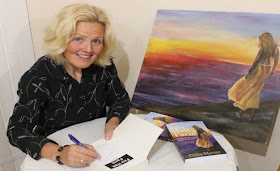1. Dialogue Tags
Many new authors are afraid of using ‘said’ or ‘asked’ and replace them with words such as ‘retorted’, ‘sniggered’, ‘growled’… I could go on – there are endless possible substitutions – but my advice on this is simple. Don’t!
Keep to using ‘said’ and ‘asked’, for these two words have a tendency to become invisible whereas words like ‘shouted’ and ‘murmured’ scattered throughout the text distract from the dialogue itself. There are far better methods for showing the reader how something is being said, without resorting to telling them, and that is something I will be coming on to below.
And as for a page of repeated ‘he said’ and ‘she said’? Well again, there are ways of avoiding this. Read on….
2. Who is speaking?
So what are the purpose of dialogue tags? Well, quite simply, they exist to show the reader which character is speaking. So if it is clear from the context of the conversation who is speaking, then dispense with the tags.
But it must be clear who is speaking. An unbroken spool of dialogue with no dialogue tags and nothing else going on will soon become confusing, and if there are multiple characters involved in a conversation then it is vital that the reader is always clear about who said what.
Sometimes dialogue tags will be the best way to achieve this. But there are other methods too .….
3. Adverbs.
You’ve heard it before but I’ll say it again, avoid the use of adverbs as much as possible. I’m not saying never use them. As with all types of language they form part of the writer’s arsenal, but should be used with caution and only when absolutely necessary.
The problem with adverbs is that they often reflect lazy writing, and this is particularly true in dialogue.
Adverbs are often used to enhance a weak verb, so, instead of a weak verb plus adverb – use a stronger verb!
And with dialogue – instead of saying “He said angrily” show the reader that the character is angry, both through the actual words the character uses – and the next point that I am going to discuss …
4. Action
So far I’ve been telling you what to avoid. Now I am going to tell you what to include.
Include action in your dialogue!
Your characters are not simply talking heads – they are living breathing entities and as such their actions will reflect their words. Think about how your characters react as they speak. Do they slam their fists on the table in anger and frustration? Are they bored and staring out of the window at something more interesting?
Use action to set the scene, show the reader what the characters are feeling and how they are reacting to the conversation, and also use action to show us who is speaking at any one time. But action is only part of the story….
5. Content
And now to the content of the conversation itself.
In real life conversations have a tendency to drift off at a tangent, or include in-jokes and banter, or for one person to waffle or maybe change the subject entirely.
However, as a writer we are not reproducing a conversation in its entirety. We are not trying to reproduce real life.
A conversation in a story is there for a reason. It is there to make a particular point or as a plot device, and for this reason it should be tight. The dialogue should move the story forwards, or give some insight into a particular character. In other words it should serve its purpose. Keep it relevant.
Also the words themselves should betray the feelings and hidden agendas of your characters, as well as how they are saying it, think about what they are saying.
6. Eavesdrop
Listen to the way people speak. Eavesdrop on the train or on the bus. Note down weird little snippets, but also listen to the way people interrupt each other, the way they interact, how the conversation ebbs and flows.
Now bring this to you dialogue. Let your characters interrupt each other. Let them be rude.
7. Location
Finally think about where the conversation is taking place. Is there any way you can bring movement to the scene? For example, instead of staring at each other across an empty table why not move them outside onto the street and have them walking? Put them somewhere that offers more scope for action and scene setting.
If you are writing a scene where the dialogue feels stilted and you’re struggling to show how your characters are feeling then try writing it again set in a different location. It can make a big difference. Use the setting to add richness.
I hope you find these tips useful. If you are looking for more writing advice check out the Tips for Writers tab on the menu bar above.


